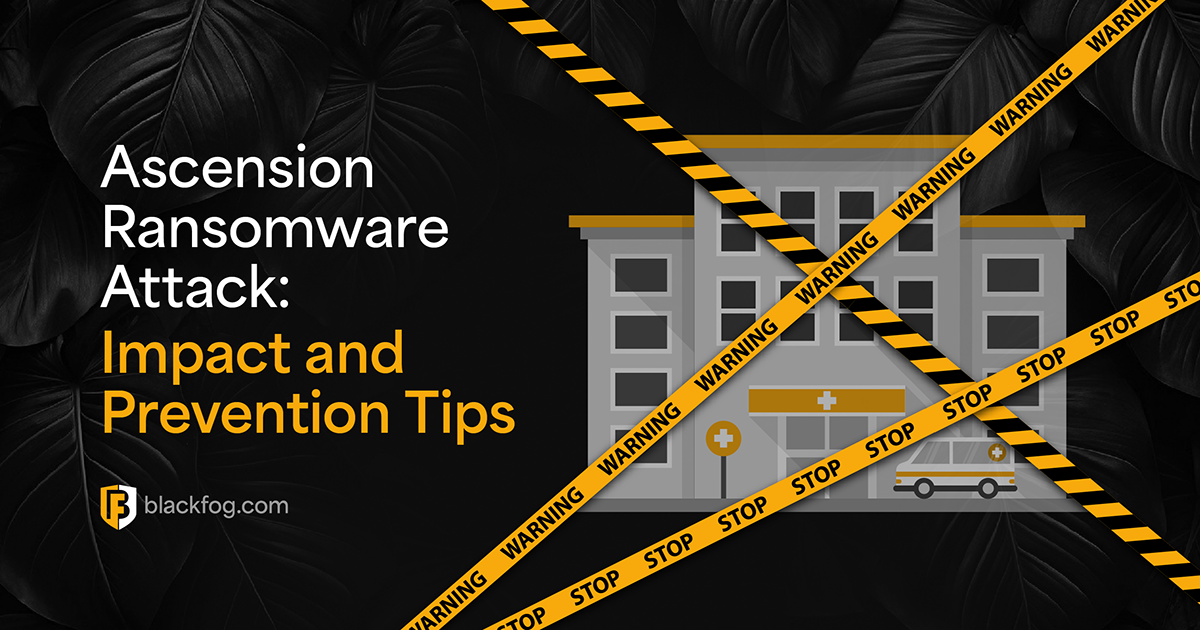
Blue Yonder, a globally renowned supply chain software provider recently fell victim to a ransomware attack that sent shockwaves through its client base. The attack targeted the company’s managed services hosted environment, causing widespread operational disruptions for major retailers, including Starbucks, Morrisons, and Sainsbury’s.
How It Happened
The attack exploited vulnerabilities in Blue Yonder’s systems, locking critical data and operations behind encryption walls. While the ransomware group behind the attack have yet to be publicly identified, the attack’s impact underscores the increasing sophistication of ransomware groups targeting key links in global supply chains. Even through Blue Yonder took immediate action and engaged external cybersecurity experts to contain the breach and began forensic investigations several major retailers have been impacted.
Impact on Companies
Blue Yonder’s role as a supply chain hub made the ripple effects of the breach especially pronounced with the following facing major disruption:
- Starbucks: The coffee giant experienced significant disruptions to its scheduling and payroll systems. Managers had to revert to pen-and-paper methods to manage employee hours and payments, creating inefficiencies and risking payroll errors. Starbucks has assured customers that these issues did not affect storefront operations.
- Morrisons: The UK-based supermarket chain is struggling with its warehouse management systems, particularly affecting the flow of fresh produce. This led to noticeable shortages in stores, causing customer frustration and putting pressure on Morrisons to resolve the issue quickly.
- Sainsbury’s: Although impacted Sainsbury’s managed to mitigate disruptions by activating contingency plans which has helped the company restore its systems more swiftly than others.
- BIC: A spokesperson for the pen manufacturer stated that they are currently experiencing some limited shipping delays as a result of the ransomware attack on Blue Yonder.
- Waterstones: A spokesperson commented “We are one of hundreds of companies worldwide that have been indirectly affected by connectivity issues for our warehouse systems, caused by the ransomware attack on Blue Yonder.”
Broader Implications
The attack on Blue Yonder highlights the vulnerabilities of modern, interconnected supply chains. Companies relying on centralized systems for operations and logistics must reassess their cybersecurity defenses to minimize risks. A single attack can cascade through industries, impacting retailers, suppliers, and ultimately, consumers.
Was Data Exfiltrated?
A new ransomware group, Termite, has taken responsibility for the cyberattack on Blue Yonder, claiming to have exfiltrated 680GB of data from the company. The stolen files reportedly include database dumps, email lists, over 200,000 documents, as well as reports and insurance records.
Blue Yonder has not confirmed whether the attack involved data exfiltration, although.
Recovery Efforts
The recovery process is ongoing. Blue Yonder has been transparent with its clients, providing regular updates on progress. The company has yet to release an official timeline for full service restoration, emphasizing caution and thoroughness to avoid further vulnerabilities.
UPDATE (12/09): According to an update on the company’s official security incident tracking page, some of Blue Yonder’s impacted customers are back online, with the company now working with external cybersecurity experts to help others return to normal business operations.
Lessons Learned
This incident underscores the critical importance of cybersecurity in supply chain management. Companies can take the following steps to enhance their resilience:
- Vendor Risk Assessments: Regular evaluations of third-party vendors to identify potential vulnerabilities.
- Robust Incident Response Plans: Detailed strategies to handle breaches and ensure swift recovery.
- Continuous Monitoring: Proactive system checks to detect and mitigate threats early.
- Backup Systems: Redundant systems to maintain operations during disruptions.
- Anti Data Exfiltration Technology: Ensure that even if attackers manage to find a way into the network they are unable to leave with any data, mitigating the risk of extortion and data breaches.
Conclusion
The Blue Yonder ransomware attack serves as a wake-up call for organizations that depend on supply chain software. Beyond operational disruptions, it highlights the risks of interconnected systems in today’s digital world. As companies navigate the aftermath, this incident underscores the need for stronger cybersecurity measures to safeguard critical infrastructure and maintain business continuity.
While Blue Yonder continues its recovery, this attack remains a stark reminder of the growing threat ransomware poses to global supply chains. Businesses must look to advanced AI-based solutions like ADX to strengthen their defenses before the next attack strikes.
How can BlackFog help you Stay Protected?
Ransomware attacks are one of the worst things to happen to a business; prevention is always better than making the decision to pay or not to pay a ransom. Anti data exfiltration (ADX) technology from BlackFog stops the attack in real-time, preventing sensitive data from being exfiltrated in the first place, thus stopping the cybercriminals in their tracks.
Learn more about how BlackFog’s ADX technology can protect your organization from ransomware and data breaches. Get started today.
Related Posts
Ascension Ransomware Attack: Impact and Prevention Tips
Learn how the Ascension ransomware attack disrupted healthcare services, the financial consequences, and the cybersecurity lessons it taught. Also receive advice on protecting patient data and preventing similar attacks in the future.
Essential Data Loss Prevention Best Practices Every Firm Should Know
Following these seven data loss prevention best practices can help any firm reduce the risk of falling victim to threats like ransomware.
BlackFog Report Reveals Record Number of Ransomware Attacks from January to March
BlackFog reports a record-breaking surge in ransomware attacks Q1 2025, with 278 disclosed cases and a 113% rise in undisclosed incidents.
AI for Network Security and Monitoring: Enhancing Cyber Defense
What opportunities do AI ransomware protection tools offer to cybersecurity pros?
Ghost Ransomware: The New Cyber Menace Targeting 70+ Countries
Ghost ransomware is targeting 70+ countries. Learn how it works, who’s behind it, and how to stay protected in today’s cyber threat landscape.
Log4Shell – Understanding the Vulnerability and Mitigation Steps
Learn about Log4Shell, its impact on industries, and effective mitigation strategies. Discover how proactive defenses, like BlackFog's ADX technology, can protect your systems from ransomware and data exfiltration.






